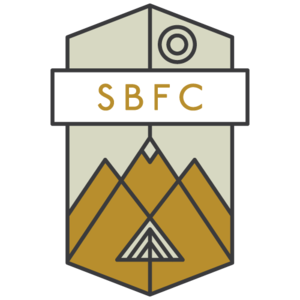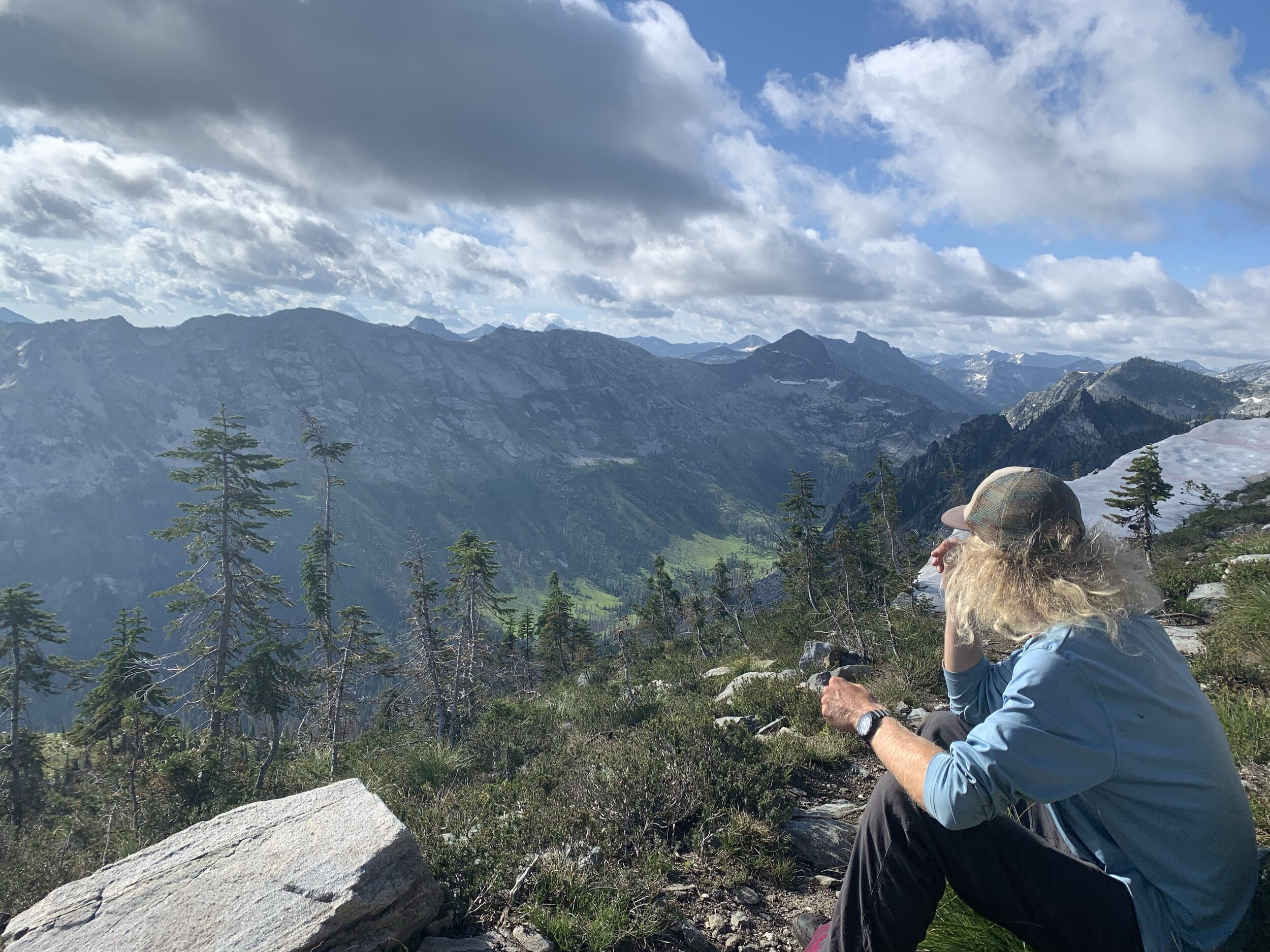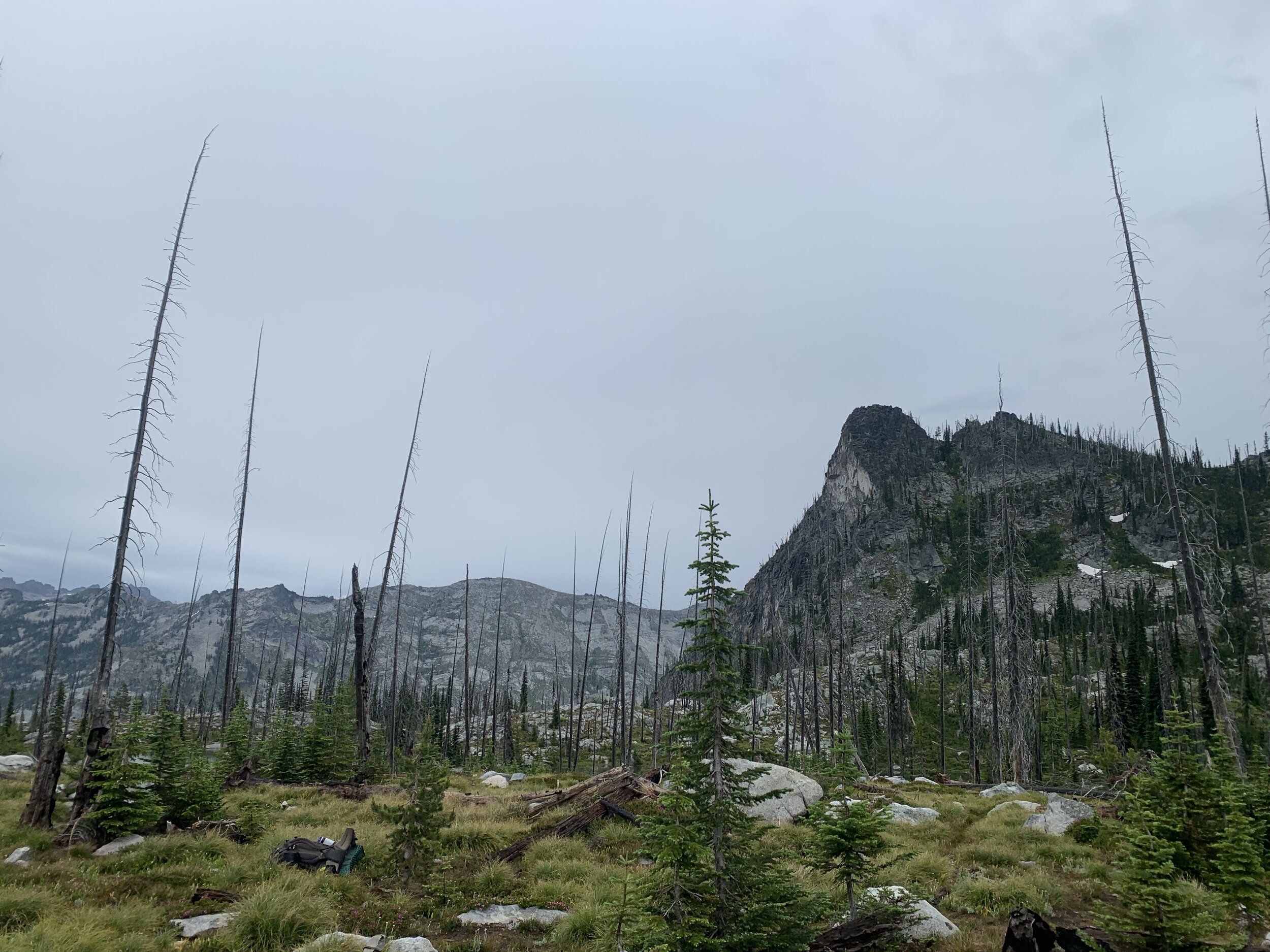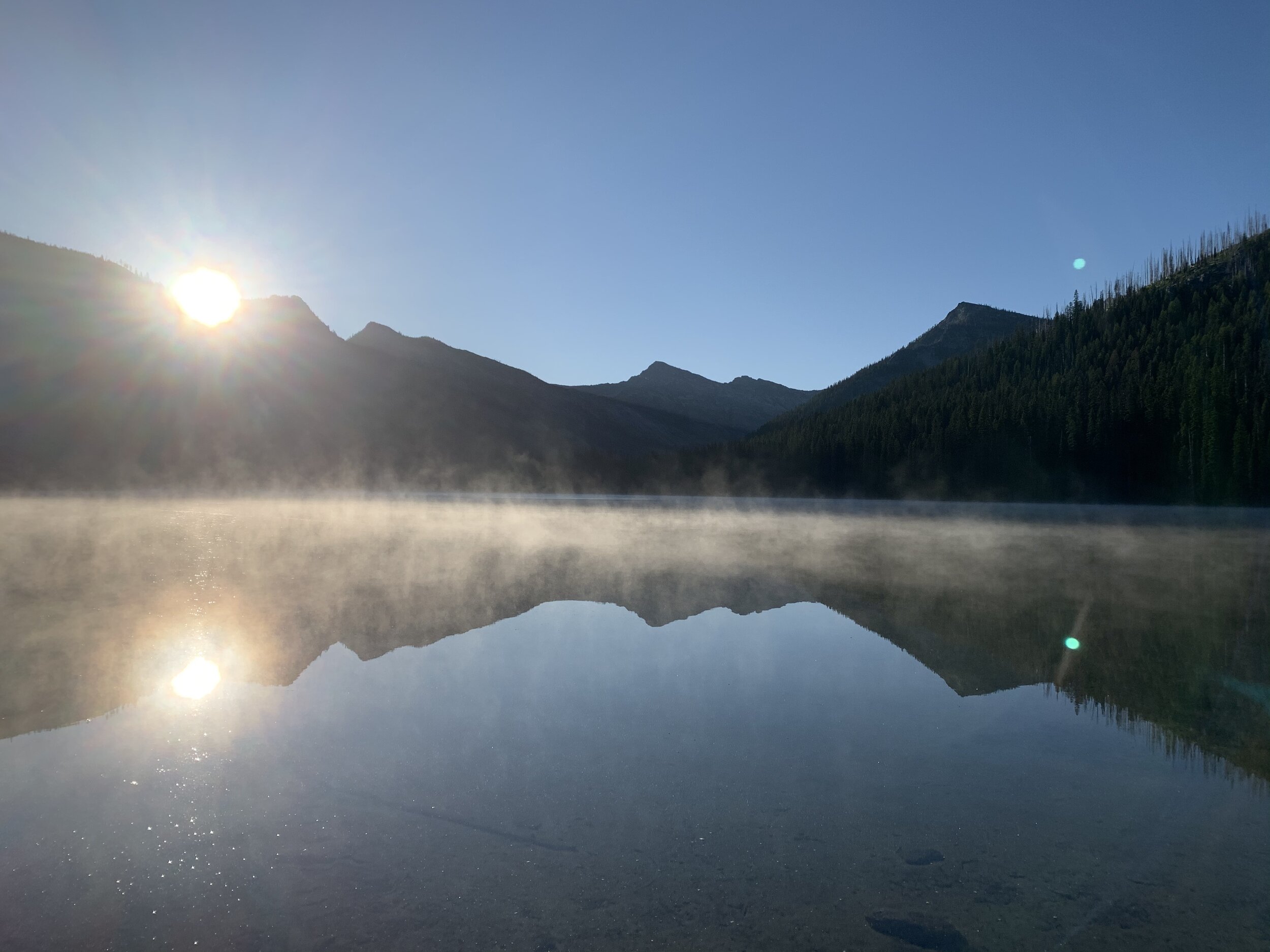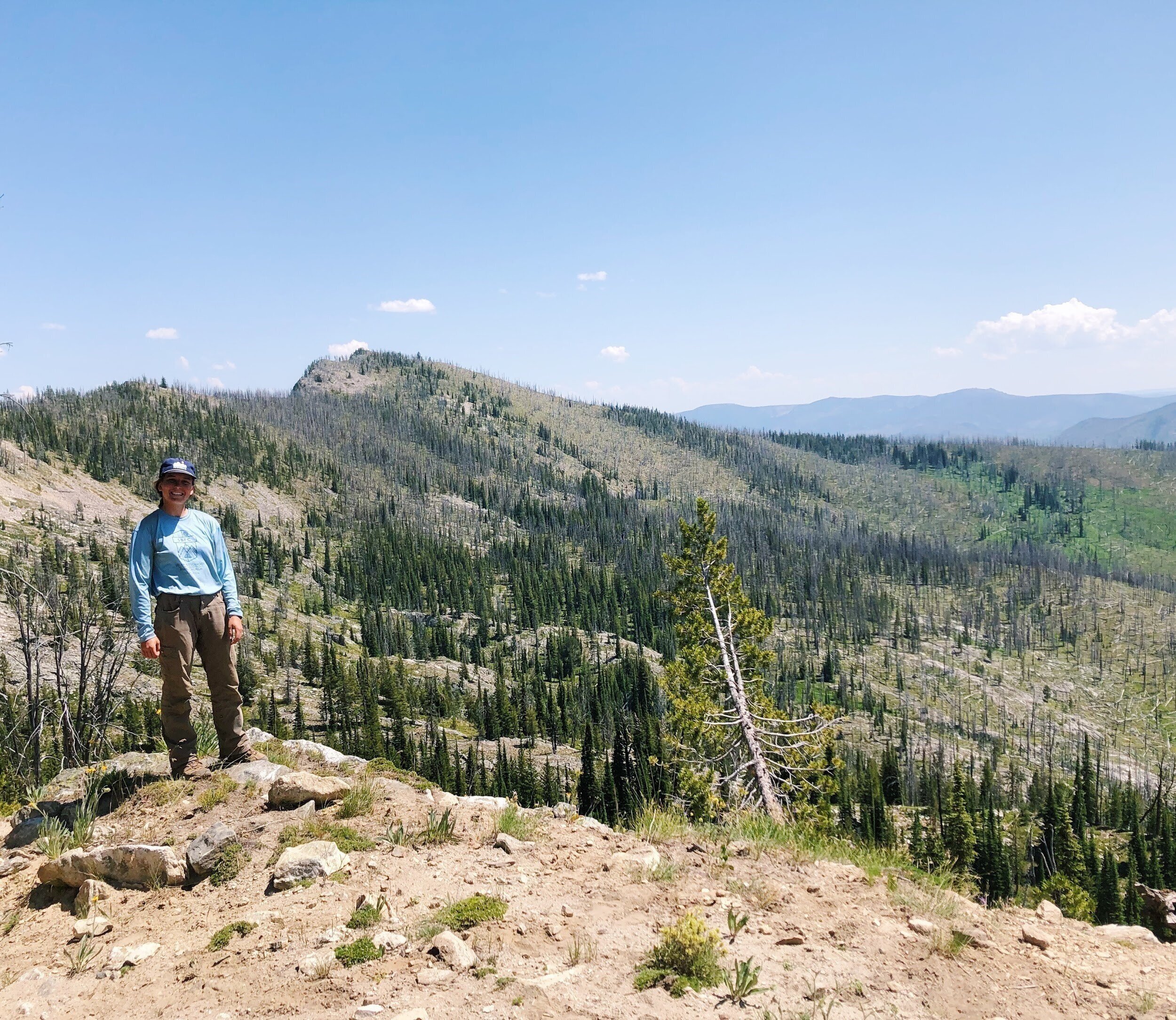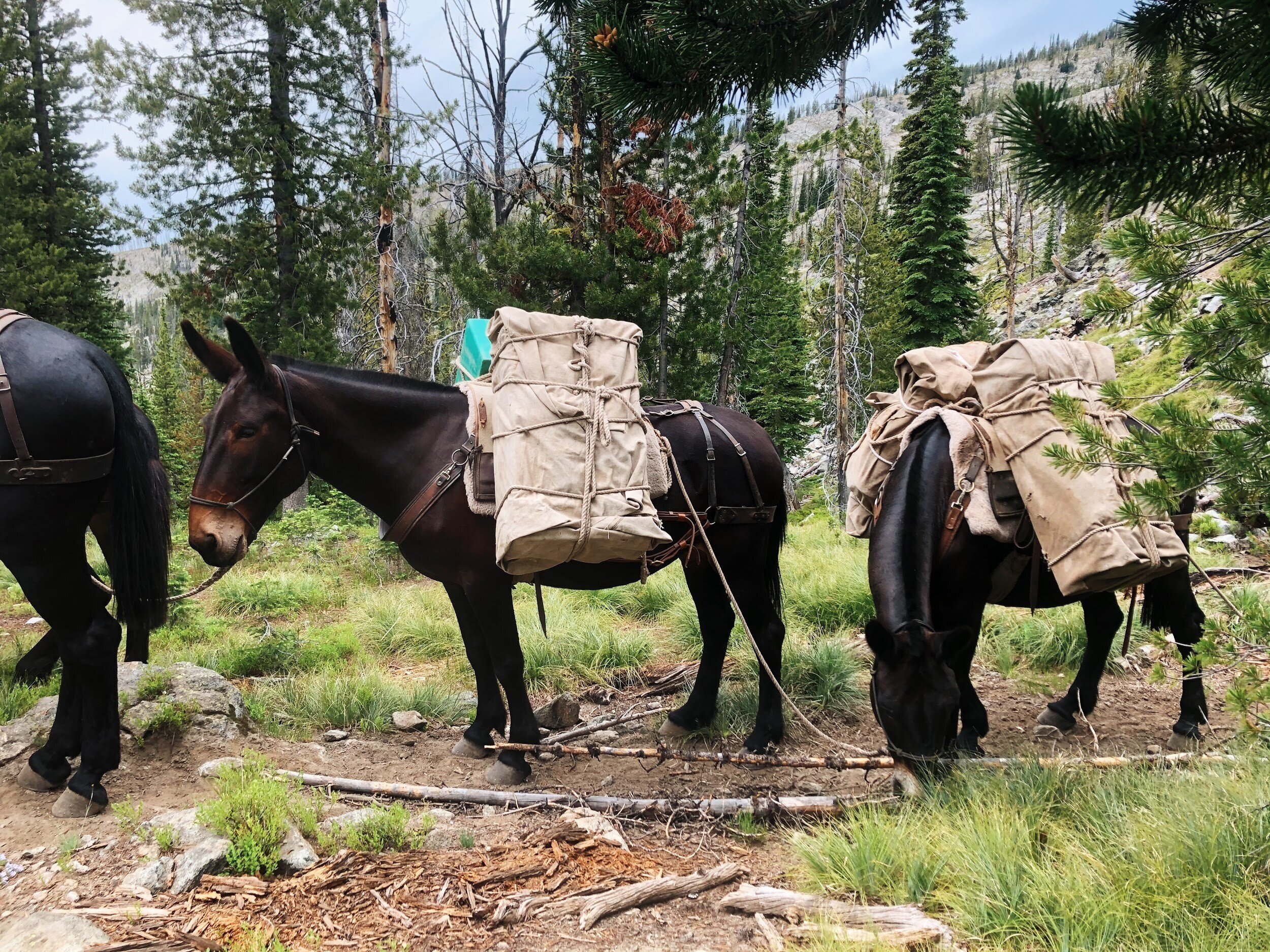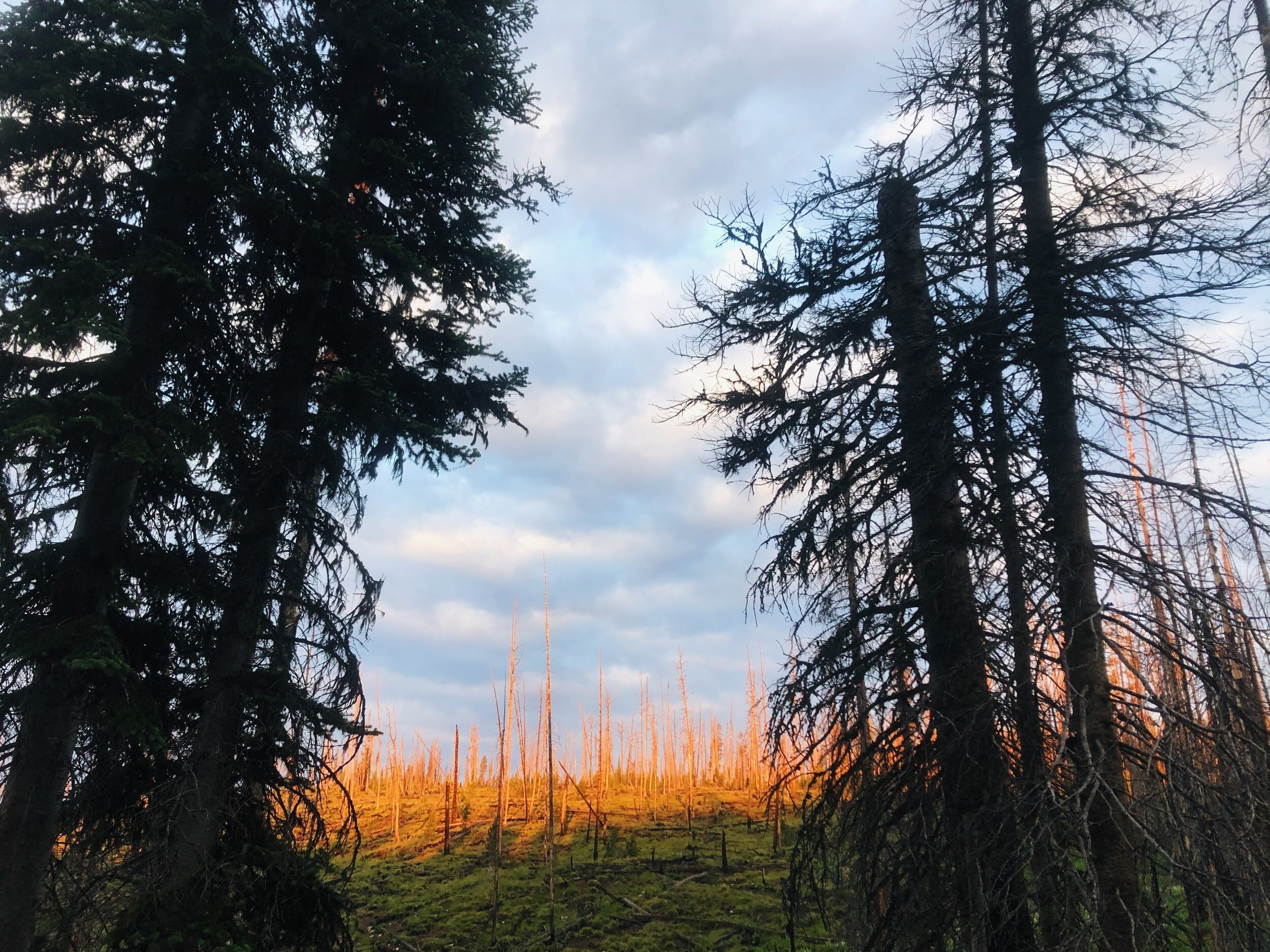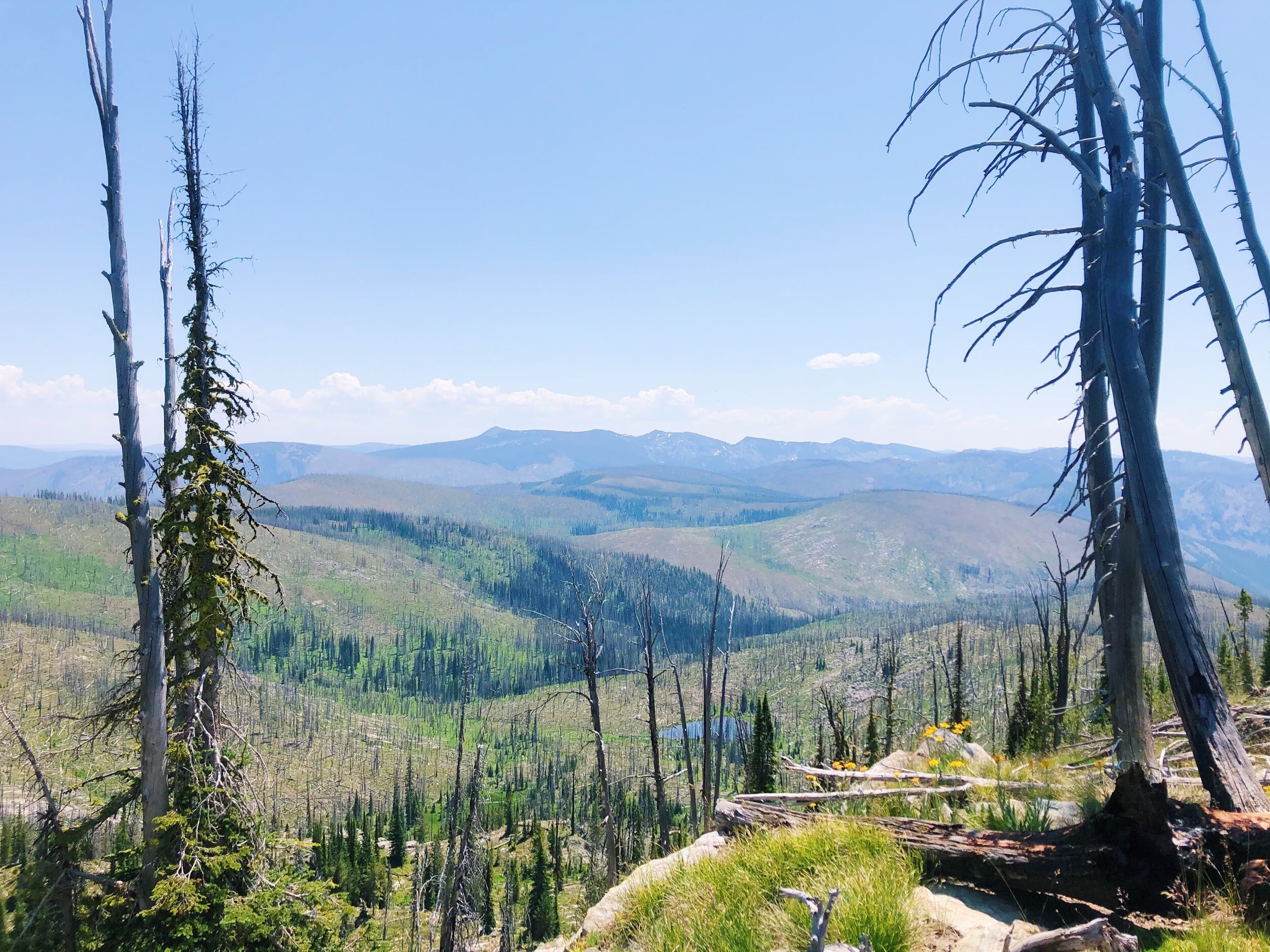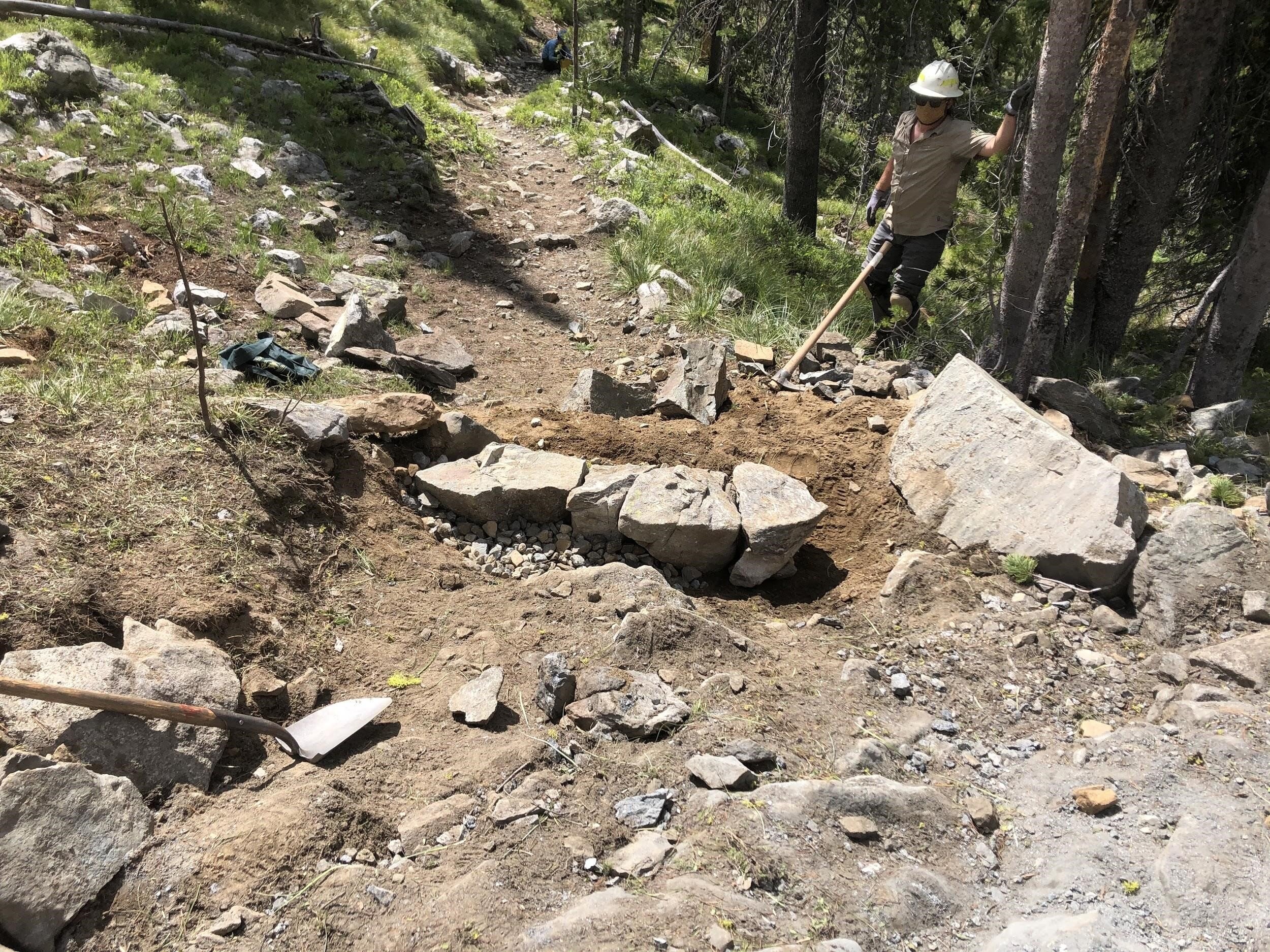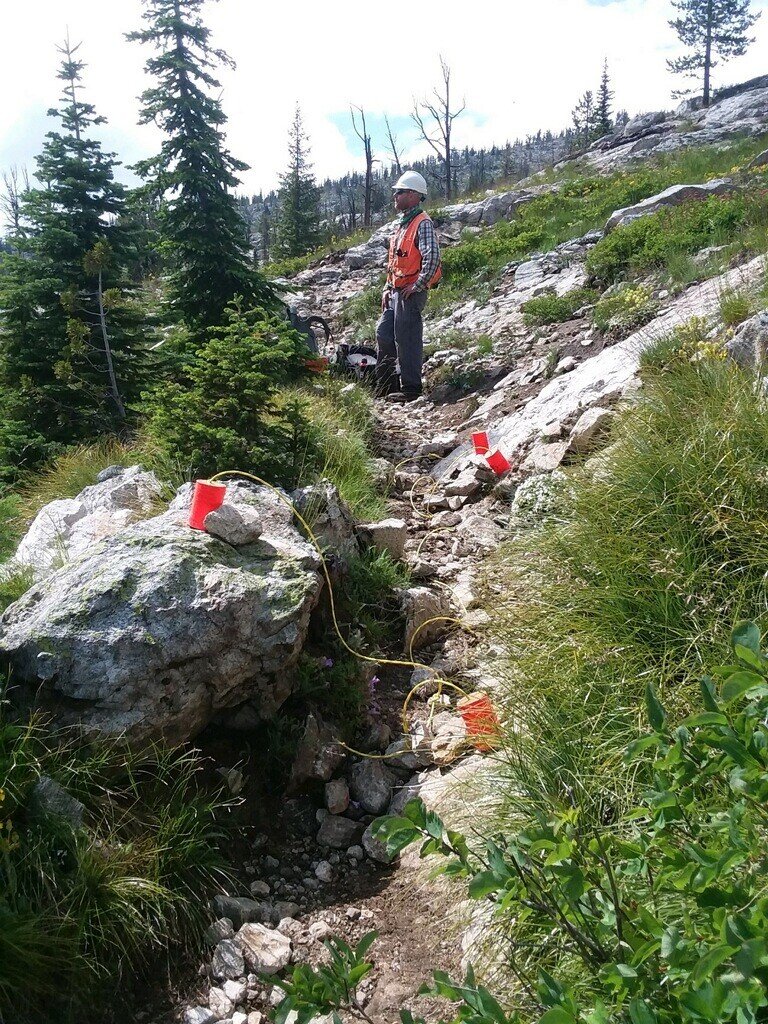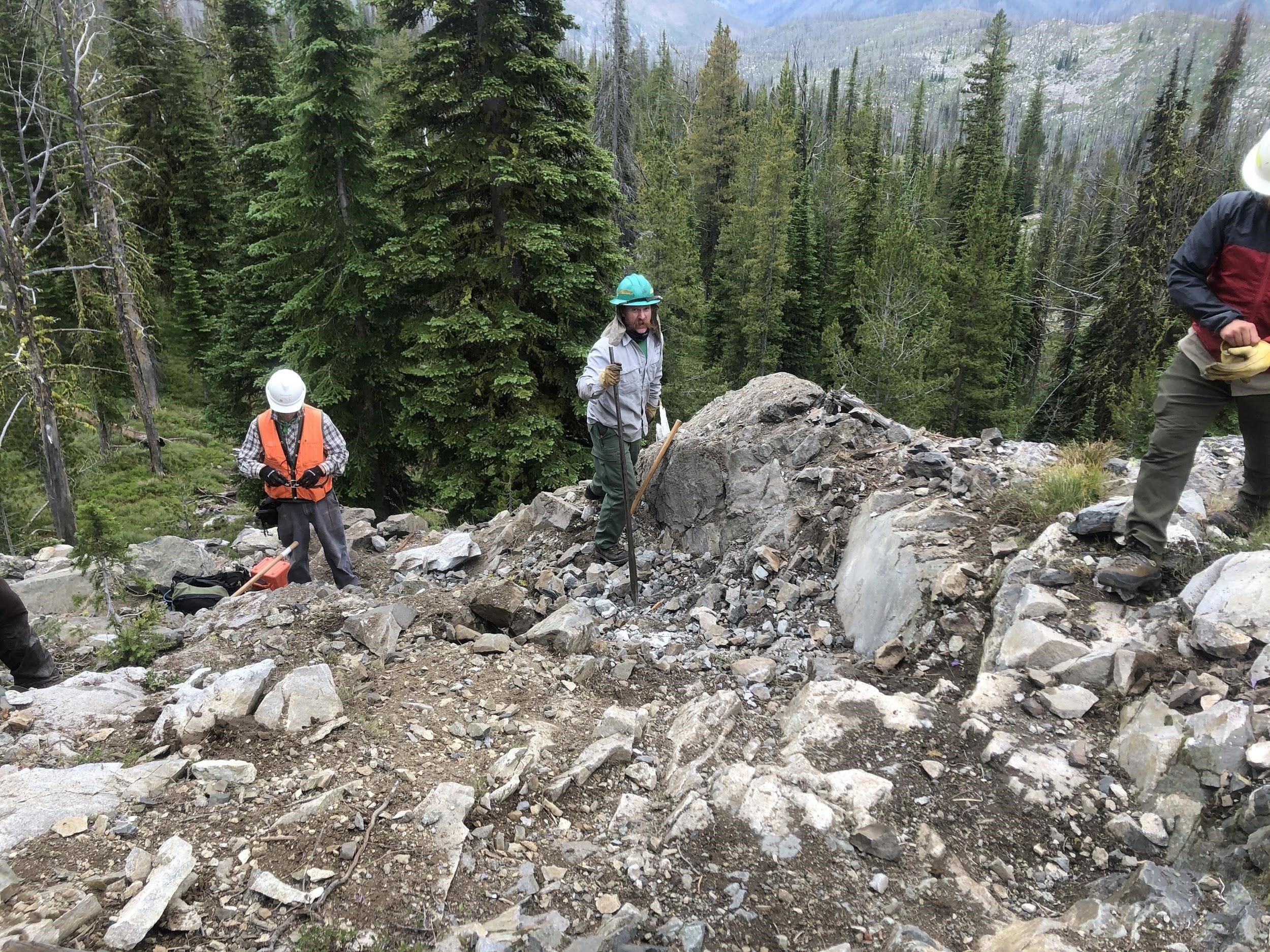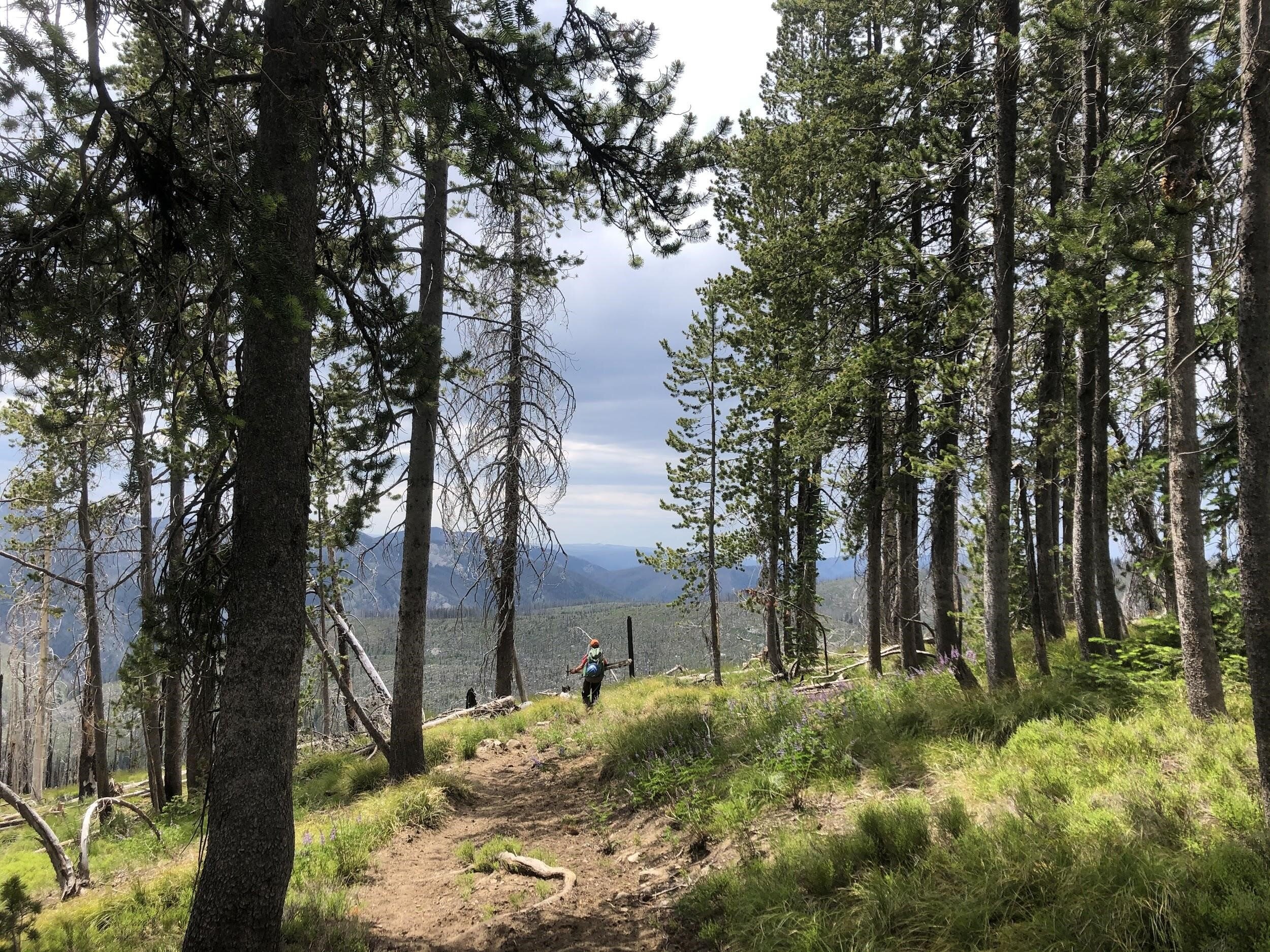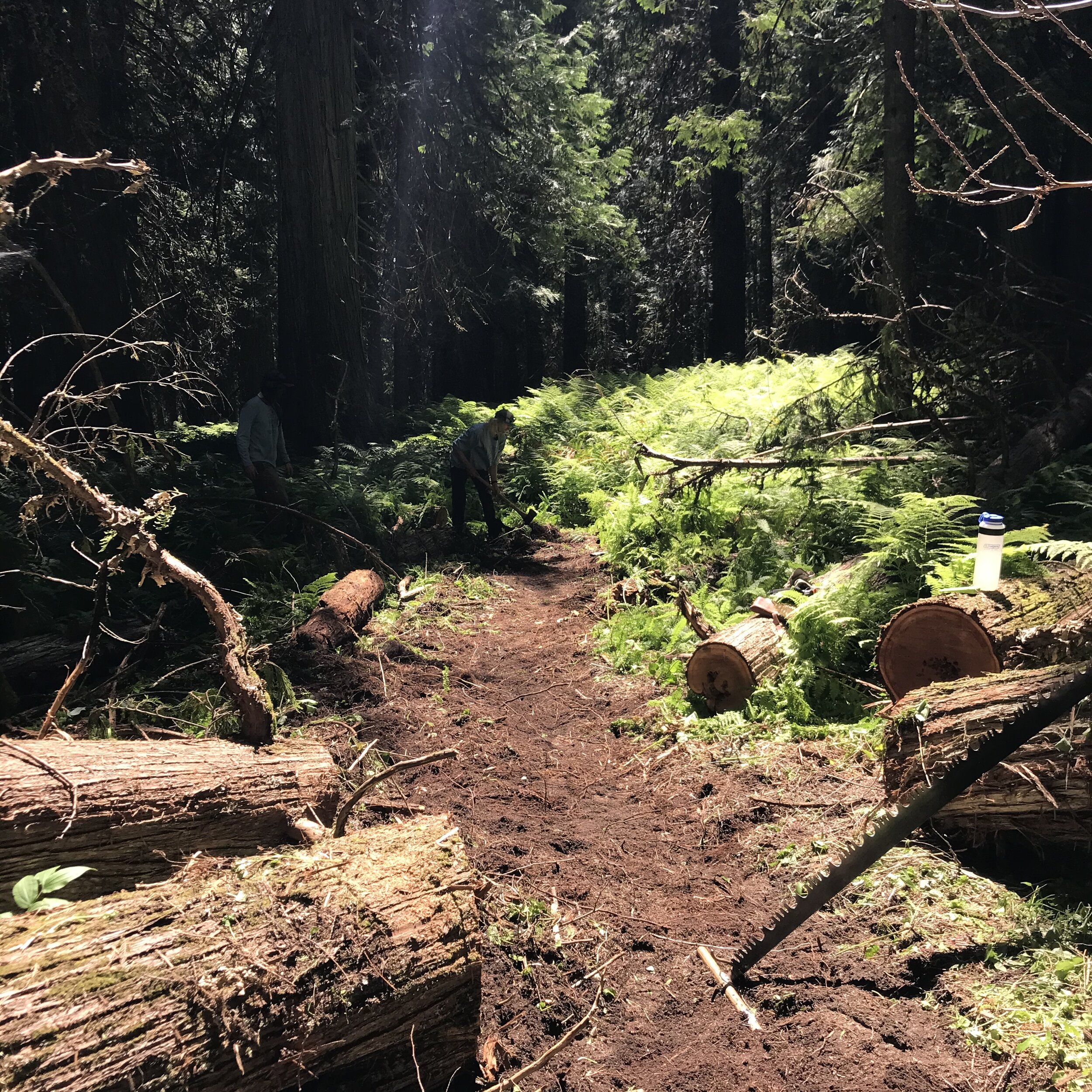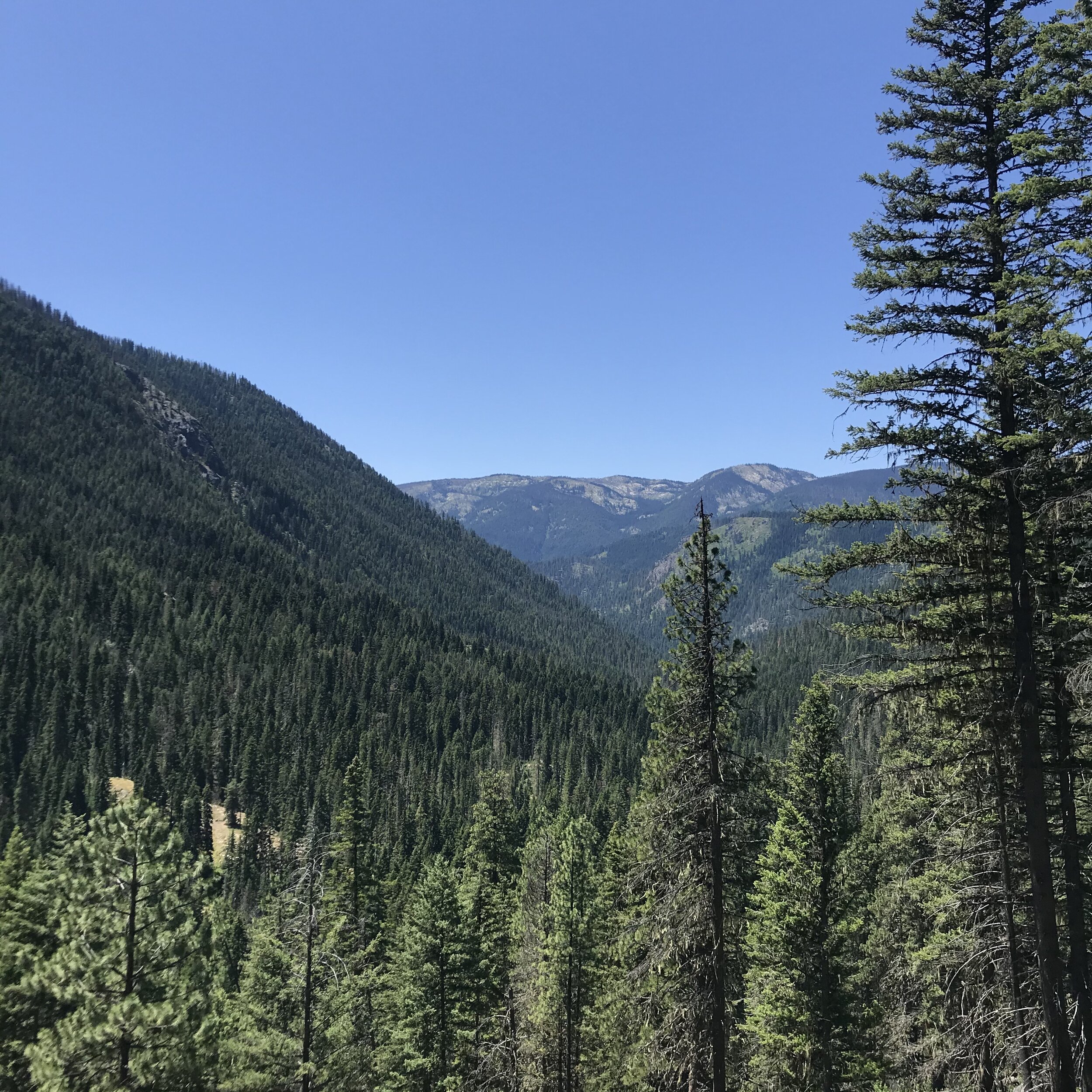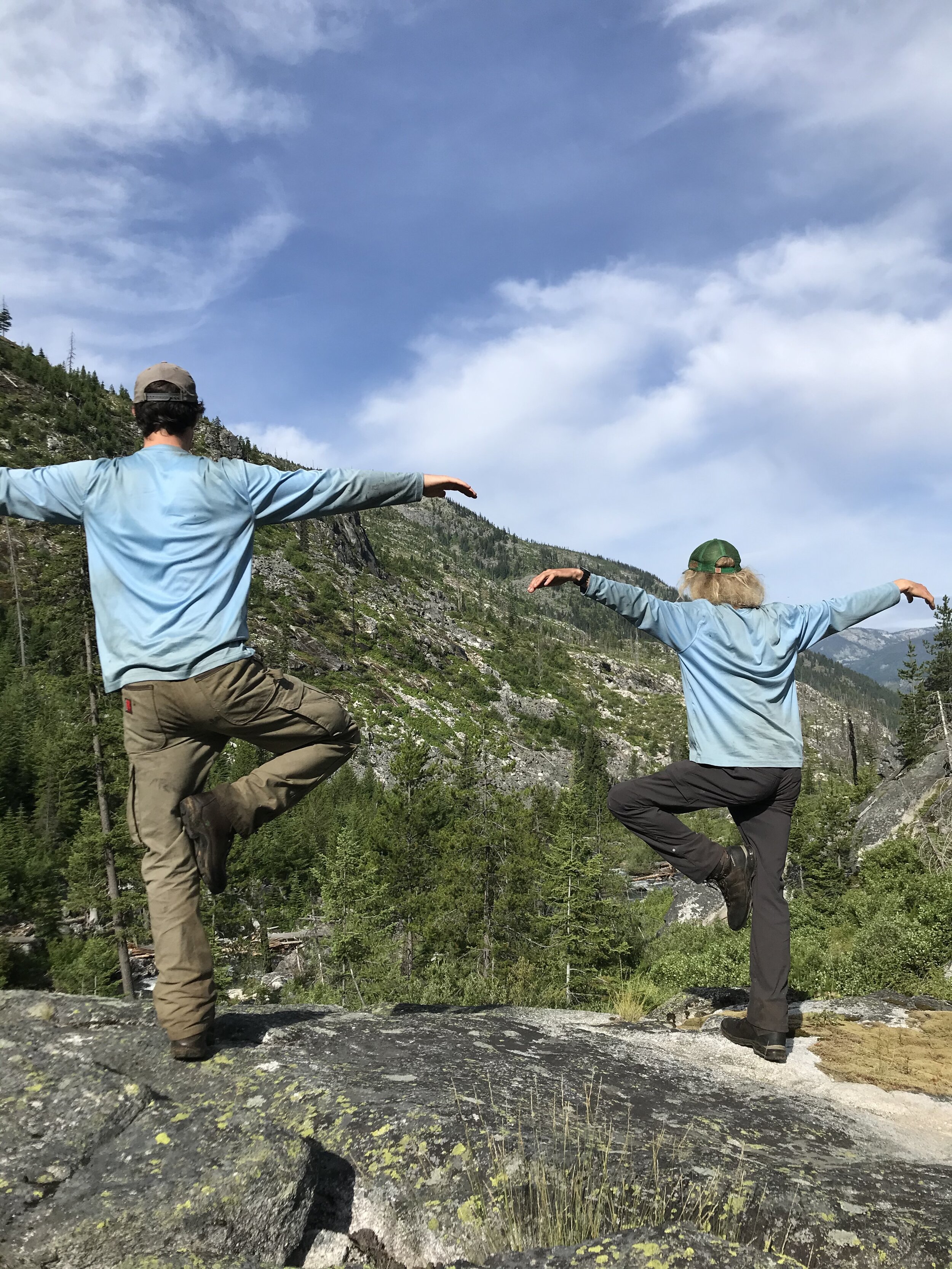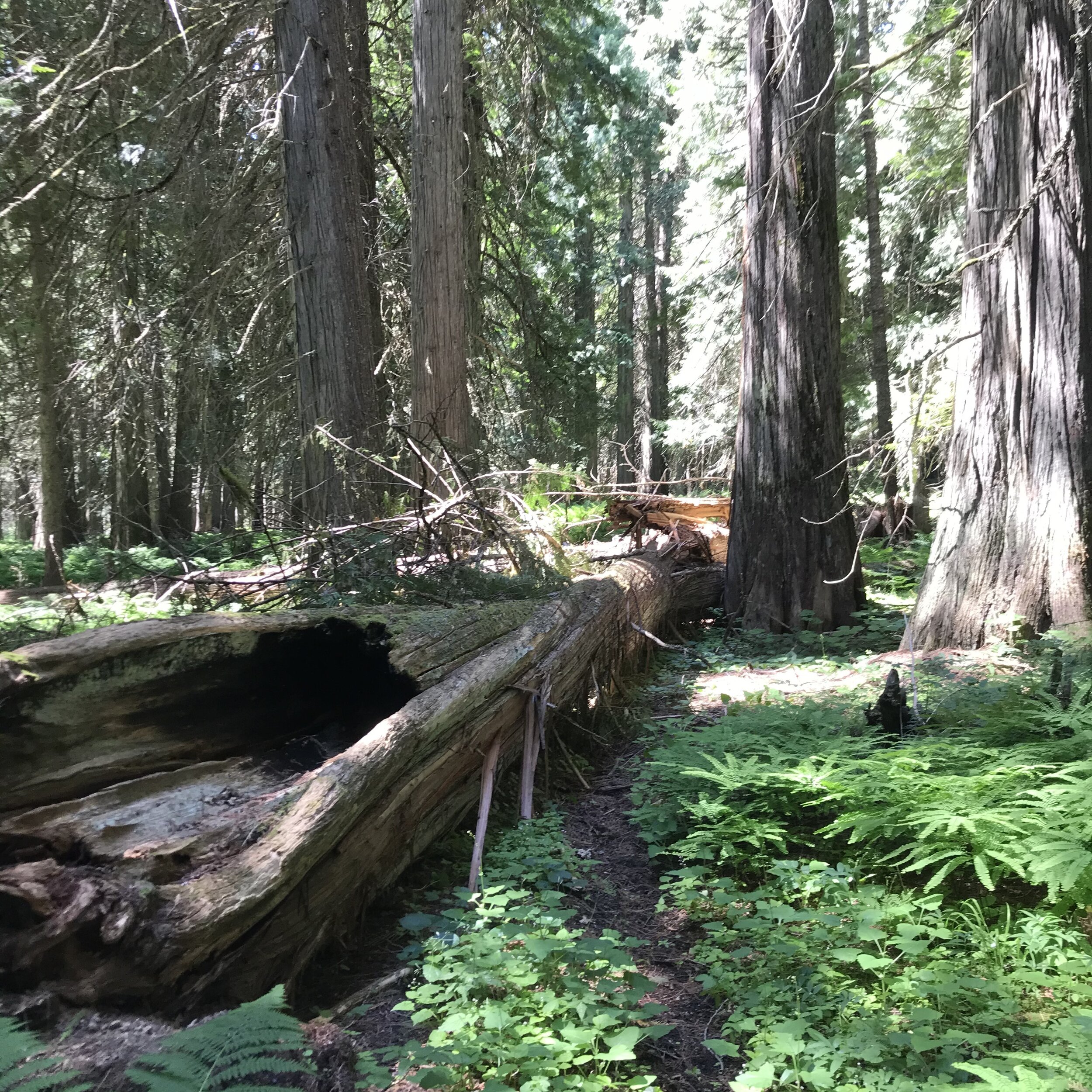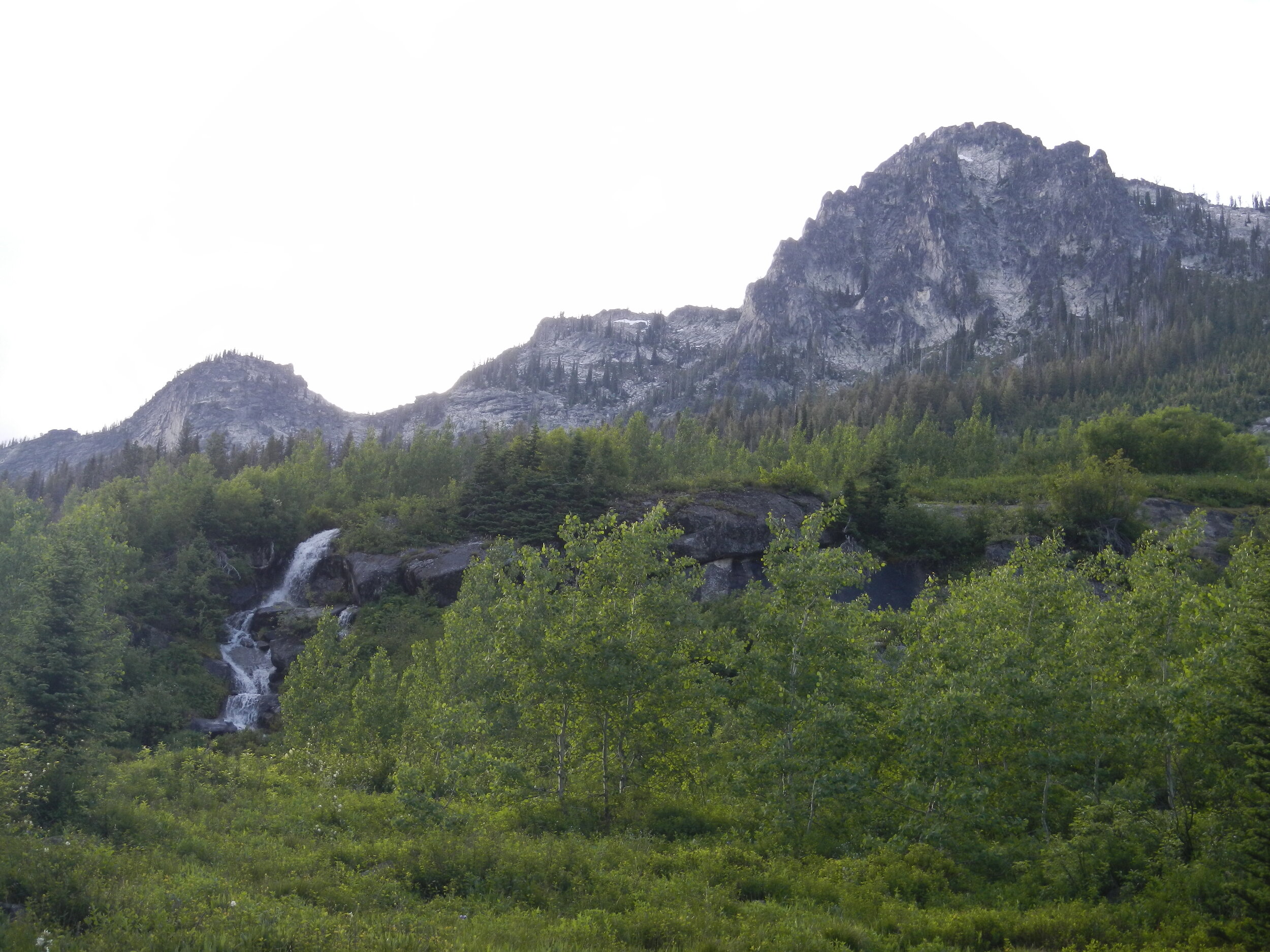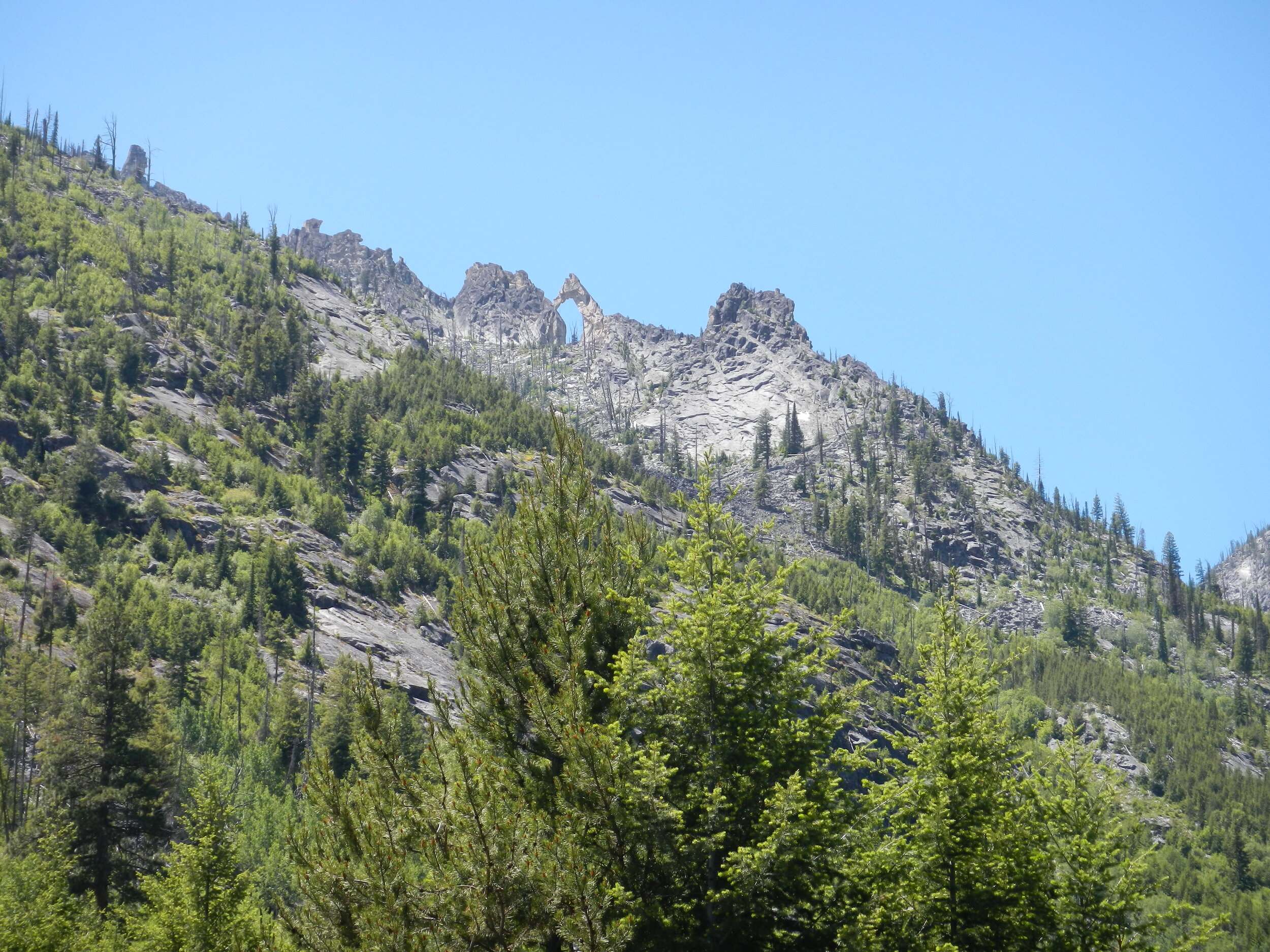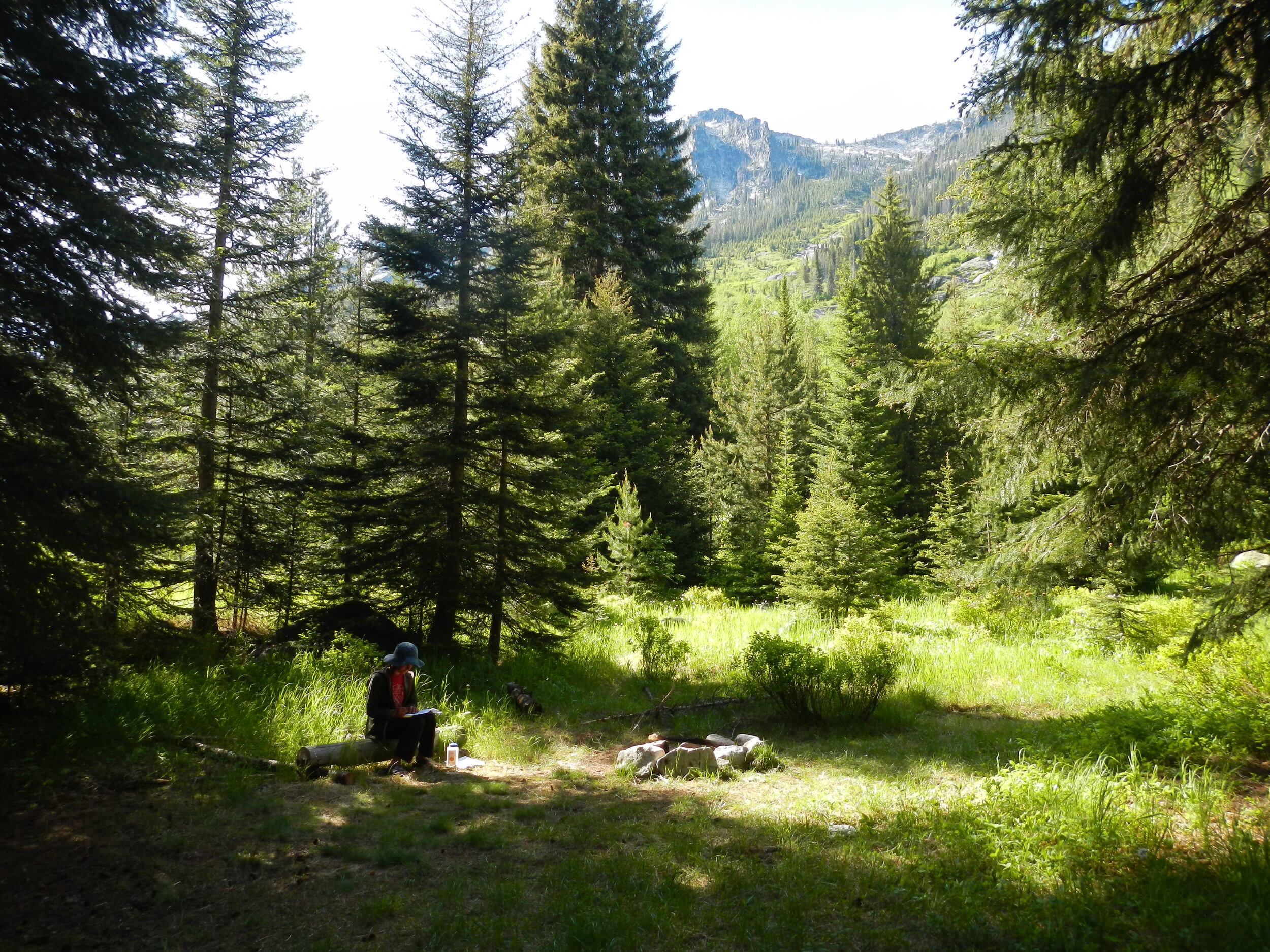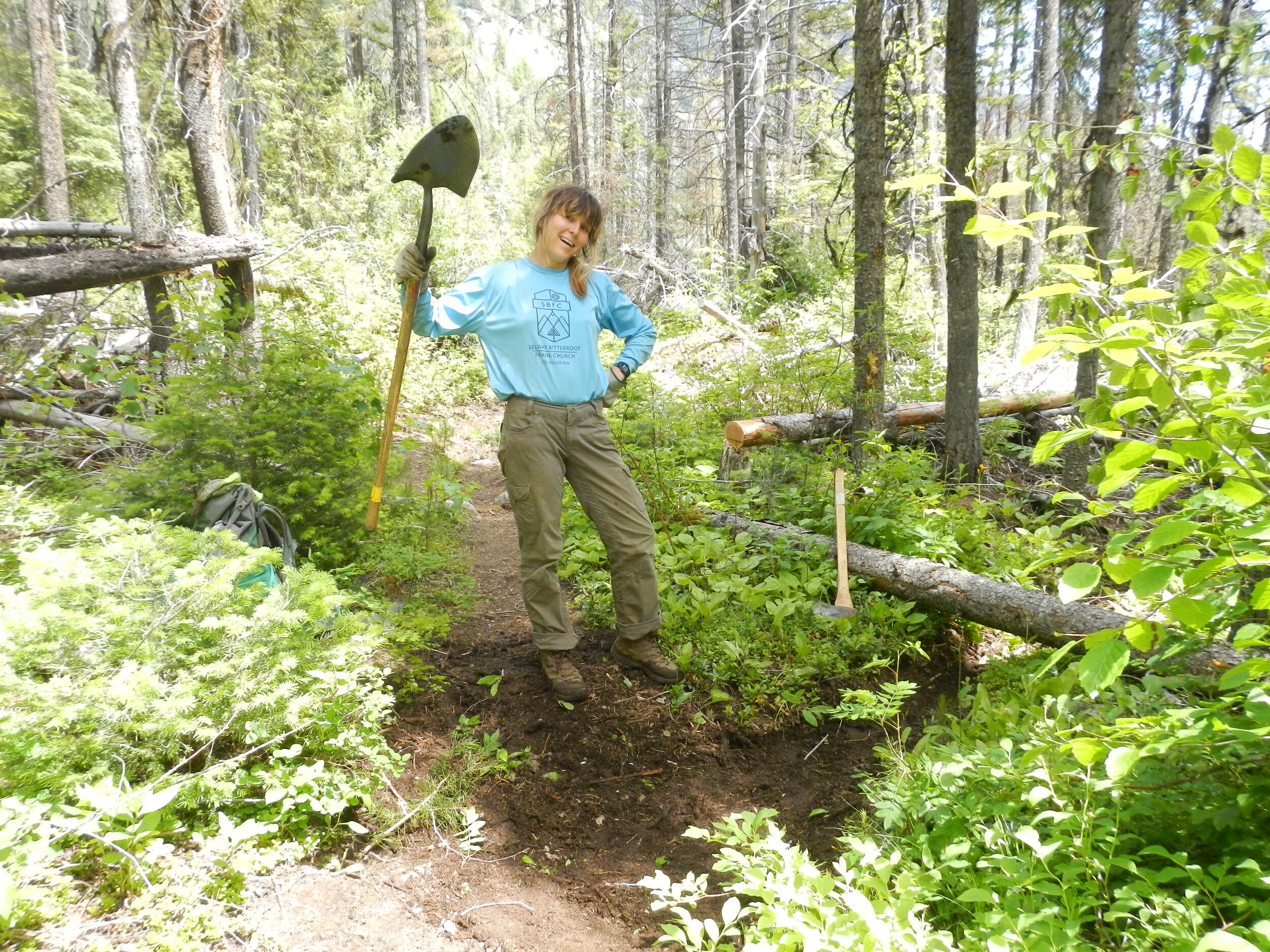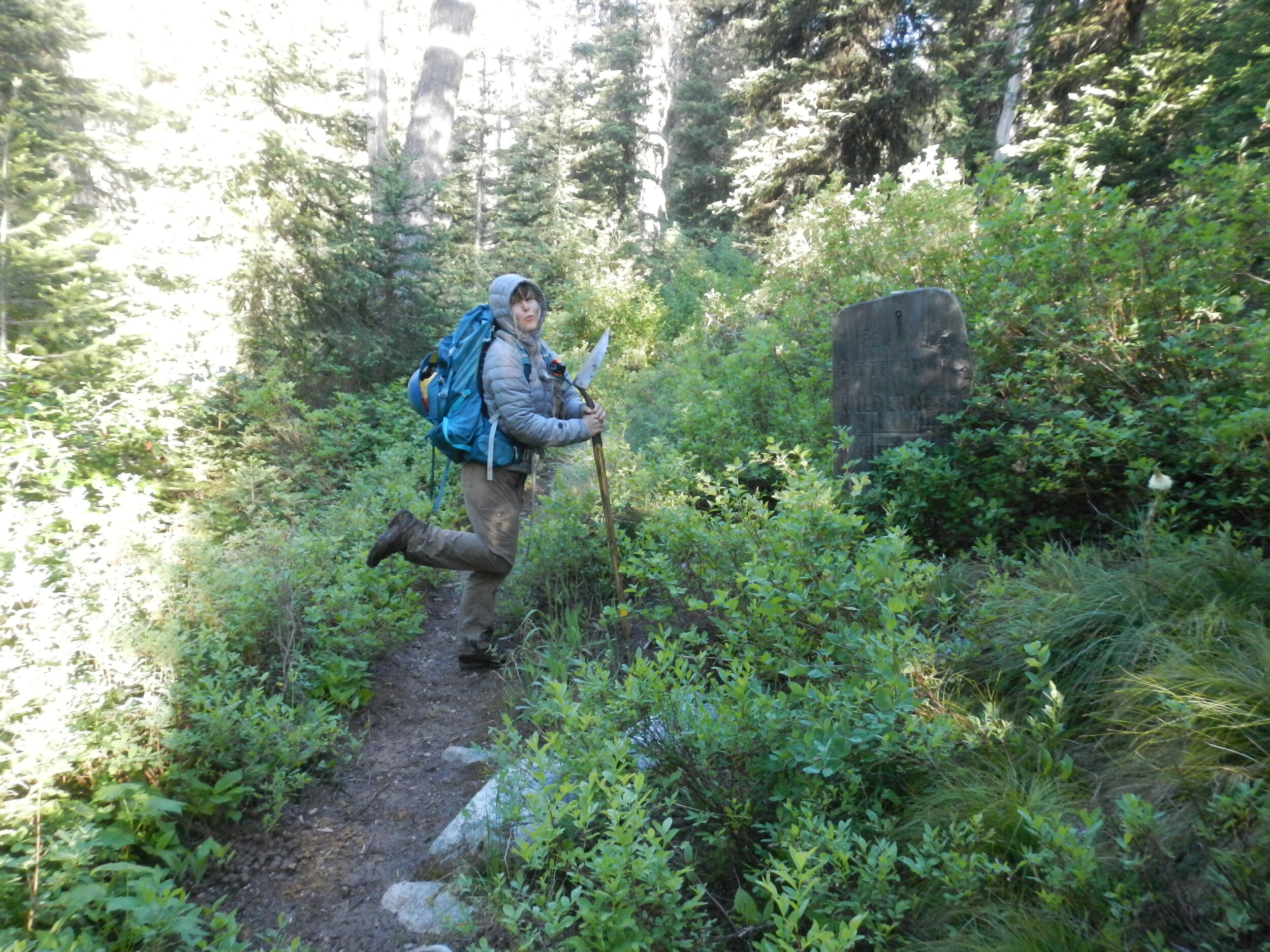Hi, we are Jonathan Marquis and Erin DiGiovanni. We were so thrilled to be selected by OpenAIR, The Selway Wilderness Bitterroot Foundation, and the United States Forest Service to be artists-in-residence and cabin volunteers at Fish Lake Guard Station over the summer. We met as graduate students studying fine art at The University of Arizona and came north to stay at Fish Lake for two weeks. By the end of it, though, neither of us wanted to leave.
The OpenAIR artist-in-residence program, in its inaugural year, is based in Missoula and works with strategic community partners to place artists in various locations throughout Western Montana, and in this case, Idaho. The application process was rigorous, and we were fortunate to be chosen. Many of the other OpenAIR residency locations were in communities with facilities, art studios, and access to supplies. Our journey as artists-in-residence was different. We went into the heart of one of the largest wilderness areas in the lower forty-eight with limited equipment.
It all began on a sunny mid-July day, after one final look-through of our supplies and gear. We split up, and each made our way to the guard station independently. Jonathan and most of the supplies were flown to Fish Lake’s airstrip (one of the three public landing strips in the wilderness area) by the Recreational Aviation Foundation. The flight into Fish Lake was unforgettable, and watching the plane leave while standing alone with a pile of gear in the middle of nowhere was surreal.
Erin’s journey began at the Gateway of the Wilderness trailhead, and she hiked to the cabin with her two dogs, Mica and Buddy, in one single push. This was Erin’s longest single-day solo hike into the backcountry with a full backpack, as well as, her longest stay in the wilderness.
Making art in a faraway wilderness area is tricky. The limited amount of supplies that had to fit in a small, fixed-wing aircraft, along with all of the basic necessities of survival, required us to maintain flexibility with what we could make. Drawing seemed manageable, but inside the cabin was surprisingly dark – we had to wear our headlamps in the middle of the day just to see our paper. Outside, the cabin was mosquito central. So, any kind of plein air was a practice in patience and radical mosquito kinship. The amenities found in-town were also absent. Our days were filled with lots of work, hauling water, chopping firewood, and food preparation. These tasks revealed a texture or rhythm to daily life that isn’t always obvious in urban areas.
Working among these conditions highlighted how the art studio back home is a pristine artmaking environment. Out here, we had to work hard, negotiate with the cabin and landscape, plan for the unexpected, and respond to a range of variable conditions. At first, this was a challenge, but by the end of our stay we felt connected and embedded in the landscape in a way that few experiences can generate.
The wilderness art residency forced us to be extra creative. For example, the dark cabin became a darkroom for the cyanotypes that Jonathan produced. A cyanotype – the same process as blueprints – uses the sun to expose an image onto light-sensitive paper. In the cabin-turned-darkroom, we were able to prep and handle the cyanotype paper before completing the exposure outside.
The cyanotype process lends itself well to the exposure of objects placed directly onto the surface of the paper, a technique called a photogram. The objects in the cabin felt significant like they were entangled with the land and a sense of local history, especially the large saws that were used to maintain the area, trails, and fell the trees. The same trees that were likely used to build the cabin. There were so many wildflowers growing around the cabin too. Jonathan combined the saws and flowers on cyanotypes to suggest the elegance, ruggedness, and fragility of wilderness.
Erin focused on drawing quiet moments of introspection through the miscellaneous objects found around the cabin. Commonplace items provoked questions of origin and value. How many hands have touched this broomstick? What was the journey like for those who packed in the wood-burning stove? Without immediate access to conveniences and commodities, ubiquitous things heightened in perceived value. An inexpensive lawn chair quickly becomes coveted for its slightly more comfortable demeanor than that of the sturdy wooden bench.
The graphite drawings Erin completed at the cabin were then altered in her studio after returning to Tucson, AZ. She added vibrant layers of color and texture through the processes of screen printing and painting. The quiet and intimate drawings were altered by the bright and saturated visuals she experienced after returning to the city.
Together we also produced a collaborative artwork called The Monitor because one of our jobs was to monitor the flights that arrived at Fish Lake. The title is also a reference to the computer monitor that in a wilderness cabin is replaced by looking out an actual window! The Monitor was on display over the summer at an OpenAIR exhibition in Missoula, and other works of ours made at Fish Lake were on display at The University of Montana Gallery of Visual Arts in September.
Looking back, there were so many memorable moments, it was like one long continuous string of them. In the cold early mornings, we would often light a fire, read, draw and make breakfast, or sit on the porch soaking up the morning light when it was too cold for the mosquitoes to bite. We went on a lot of hikes, swam in the lake, we foraged for mushrooms, caught fish, and cooked from the land in a way that felt deeply meaningful and nourishing. We both cannot wait to do it again!
